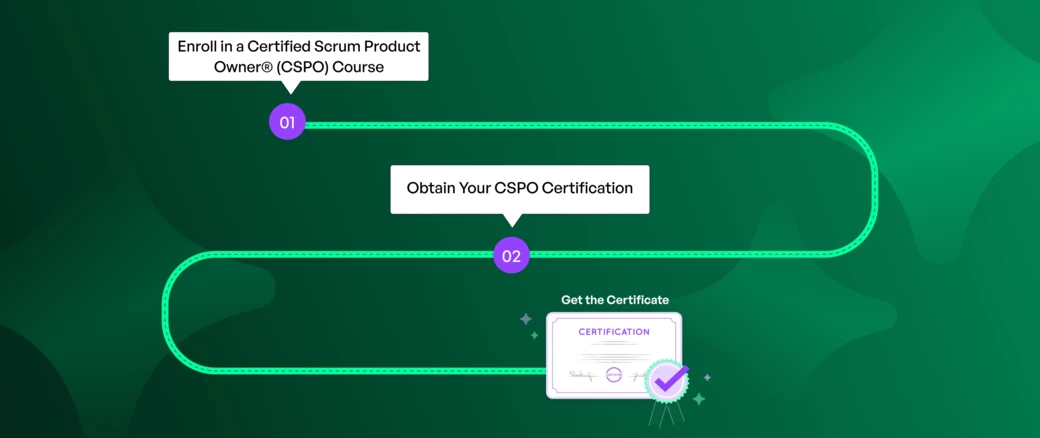Why Are Product Owner Growth Opportunities Critical Today?
The contemporary business landscape demands Product Owners who can balance multiple competing priorities while maintaining clear product vision and stakeholder alignment. Product Owner growth opportunities have become essential investments for both individuals and organizations.
1. Evolving Role Complexity
Product Owners today manage increasingly complex product portfolios across distributed teams, multiple time zones, and diverse stakeholder groups. The role extends beyond simple backlog management to encompass strategic thinking, market analysis, competitive positioning, and value stream optimization. Without structured learning pathways, Product Owners risk falling behind in these critical competencies.
2. Market Demand for Certified Professionals
Organizations worldwide are prioritizing certified Product Owners who demonstrate validated expertise. Companies implementing Agile transformations specifically seek professionals with recognized credentials who can immediately contribute to product success without extended onboarding periods. This market reality makes Product Owner education programs invaluable for career advancement.
3. Competitive Advantage Through Skill Development
Product Owner skills development directly correlates with improved product outcomes, higher team satisfaction, and increased business value delivery. Research consistently shows that trained Product Owners make better prioritization decisions, communicate more effectively with stakeholders, and create more cohesive product strategies than their untrained counterparts.
What Product Owner Education Programs Are Available?
Product Owner growth opportunities exist across multiple formats, each offering unique benefits depending on your learning style, schedule, and career objectives.
1. Formal Certification Programs
Industry-recognized certifications provide structured curricula that ensure comprehensive coverage of essential Product Owner competencies. Popular certifications include:
Certified Scrum Product Owner (CSPO): Foundation-level certification covering Scrum framework and basic Product Owner responsibilities
Advanced Certified Scrum Product Owner (A-CSPO): Advanced techniques for experienced Product Owners
SAFe POPM: Specialization for Product Owners working in scaled Agile environments
Professional Scrum Product Owner (PSPO): Assessment-based certification focusing on practical application
These programs typically combine instructor-led training with hands-on exercises, case studies, and certification examinations that validate your knowledge.
2. Workshops and Bootcamps
Intensive short-format learning experiences provide focused skill development in specific areas. These might cover advanced topics like product discovery, user story mapping, stakeholder management techniques, or metrics-driven product management. Workshops offer concentrated learning without long-term time commitments.
3. Online Learning Platforms
Self-paced courses through platforms like Coursera, LinkedIn Learning, and Udemy allow flexible skill development around busy schedules. While these typically don't offer recognized certifications, they provide valuable knowledge in specific areas and can complement formal training programs.
4. Peer Learning Communities
Agile Product Owner learning extends beyond formal training into community engagement. Local Scrum user groups, online forums, product management communities, and professional networks provide ongoing learning through experience sharing, mentorship, and collaborative problem-solving.
How to Maximize Product Owner Growth Opportunities
Maximizing product owner growth opportunities requires a strategic approach to learning that helps you extract maximum value from educational investments and accelerate your professional trajectory.
1. Identify Specific Skill Gaps
Before enrolling in any Product Owner education programs, conduct a thorough self-assessment to identify precise competency gaps. Gather feedback from development teams and stakeholders to evaluate areas where you struggle most. This targeted approach ensures you select Agile Product Owner learning opportunities that address genuine development needs rather than duplicating existing knowledge.
2. Apply Knowledge Immediately
Product Owner skills development requires immediate practical application to ensure retention and demonstrate value. Identify one or two techniques from each training session and apply them in your next sprint planning, backlog refinement, or stakeholder meeting. This experiential reinforcement transforms theoretical knowledge into practical capability while building confidence in new approaches.
3. Engage with Professional Communities
Extend your learning beyond formal programs by actively participating in Product Owner communities. Join local Scrum user groups, engage in online forums, attend product management meetups, and connect with other Product Owners on LinkedIn. These communities provide ongoing support, diverse perspectives on common challenges, and access to collective wisdom that complements structured training.
4. Build a Continuous Learning Plan
Product Owner growth opportunities should follow a deliberate, ongoing pathway rather than sporadic events. Create a personal development plan mapping out learning objectives across quarters or years. Start with foundational certifications like CSPO, progress to advanced credentials, and supplement with targeted workshops addressing specific weaknesses. Schedule regular time for reading industry blogs, studying case studies, and exploring emerging product management practices.
5. Balance Technical and Soft Skills
While Product Owner skills development often emphasizes frameworks and processes, don't neglect Product Owner soft skills that truly differentiate exceptional practitioners. Seek learning opportunities that develop communication excellence, emotional intelligence, negotiation capabilities, and leadership presence alongside technical Agile knowledge. Many Product Owners discover that soft skills training produces the most dramatic improvements in their effectiveness.
What Core Competencies Should Product Owners Develop?
Successful Agile Product Owner learning encompasses multiple knowledge domains that work together to create comprehensive professional capability.
1. Strategic Product Vision
Product Owners must articulate compelling product visions that inspire teams and align stakeholders around common goals. This requires understanding market dynamics, customer needs, competitive landscapes, and business strategy. Training programs teach frameworks for vision development, roadmap creation, and strategic communication that translate abstract concepts into actionable development plans.
2. Backlog Management Excellence
Effective backlog management represents the operational heart of the Product Owner role. This includes writing clear user stories, defining acceptance criteria, prioritizing work based on value and dependencies, and maintaining backlog health through regular refinement. Product Owner education programs provide proven techniques for managing backlogs at scale while keeping teams focused on highest-value work.
3. Stakeholder Engagement & Communication
Product Owner soft skills in stakeholder management often determine success or failure more than technical knowledge. This includes negotiation, conflict resolution, active listening, persuasive communication, and emotional intelligence. Learning opportunities that address these competencies help Product Owners navigate complex organizational politics and build consensus among diverse stakeholder groups.
4. Data-Driven Decision Making
Modern Product Owners must leverage metrics, analytics, and customer feedback to make informed decisions. Training programs teach how to identify relevant KPIs, interpret data correctly, run experiments, and use evidence to validate assumptions rather than relying solely on intuition or opinions.
Frequently Asked Questions
1: Do I need a technical background to succeed as a Product Owner?
While technical understanding helps, it's not absolutely required. Many successful Product Owners come from business, marketing, or operations backgrounds. The key is the willingness to learn and collaborate effectively with development teams.
2: How long does it take to become proficient as a Product Owner?
Basic competency can be achieved through 2-day certification training, but true proficiency typically requires 6-12 months of practical experience applying learned concepts in real-world situations.
3: Are Product Owner certifications recognized internationally?
Yes, major certifications like CSPO, PSPO, and SAFe POPM are globally recognized and valued by organizations worldwide implementing Agile practices.
4: Can I pursue Product Owner learning while working full-time?
Absolutely. Many programs offer flexible formats, including online training, evening courses, and self-paced learning options designed for working professionals.
5: What's the difference between Product Owner and Product Manager?
While roles overlap, Product Owners typically focus on tactical execution within Scrum teams, while Product Managers handle broader strategic responsibilities. Many organizations use terms interchangeably, and skills development applies to both roles.
6: How do I choose between different certification programs?
Consider your current role, organizational context, and career goals. CSPO works well for general Scrum environments, while SAFe POPM suits large-scale implementations. Research each program's focus to match your specific needs.







 • A Product Owner's role demands continuous evolution to stay relevant in today's fast-paced Agile environments, where customer expectations and market dynamics shift rapidly
• A Product Owner's role demands continuous evolution to stay relevant in today's fast-paced Agile environments, where customer expectations and market dynamics shift rapidly 






